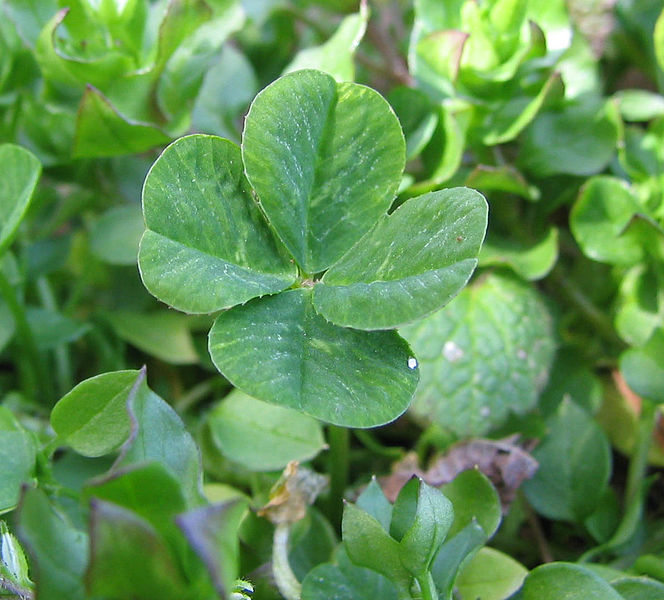Happy St. Patrick's Day everyone! As a plant lover, this holiday has to be one of my favorites just because I get to wear green (my favorite color). After doing something similar around Christmas for poinsettias, I decided to do a little digging the plant related traditions that go along with St. Patrick's Day, especially the symbol of the holiday: the shamrock.

The name shamrock is derived from Irish word "seamróg", which is the diminutive version of the Irish word for clover (seamair) which means "little clover" or "young clover". Because shamrock is a common name, it's often used to refer to a few different species, usually Trifolium dubium (lesser clover) or Trifolium repens (white clover). There are also other three-leaved plants that are often called shamrocks or clovers. There is no consensus on which is the "true" shamrock and many botanists hold different opinions on the matter. A survey showed that Lesser Clover was the most favored by botanists by a small percentage. White clover, however, is most similar to the form that is seen on most St. Patrick's Day decorations.
 |
| White Clover |
 |
| Lesser Clover |
The most commonly known legend about shamrocks in relation to St. Patrick's Day is that St. Patrick used its three leaved structure to teach the Holy Trinity to Irish pagans. It's unknown if this actually occurred, but is probably the most popular shamrock myth.
 |
| St. Patrick depicted holding a shamrock. |
"At the end of the day the shamrock which has been worn in the coat or the hat is removed and put into the final glass of grog or tumbler of punch; and when the health has been drunk or the toast honoured, the shamrock should be picked out from the bottom of the glass and thrown over the left shoulder."
It's not terribly difficult to see where our current St. Patrick's Day traditions come from, given this information.
The shamrock is also the national symbol of Ireland and is depicted in many emblems of state, has been worn by many revolutionaries and militias over the course of Irish history as a symbol of national pride. You'll also see it on postage stamps, the planes of Aer Lingus (the Irish airline), the symbol of the Irish Farmers Association and many Irish sports teams.
A four-leaf clover is a rare form of the three-leaved clover and is thought to be caused by a recessive gene and possibly errors caused by environmental effects. Research has now made it possible for breeders to work with the four-leaf forms and breed them at a higher pace.
 |
| A four-leaf form of White Clover. |
Source: Wikipedia
Picture Sources:

No comments:
Post a Comment